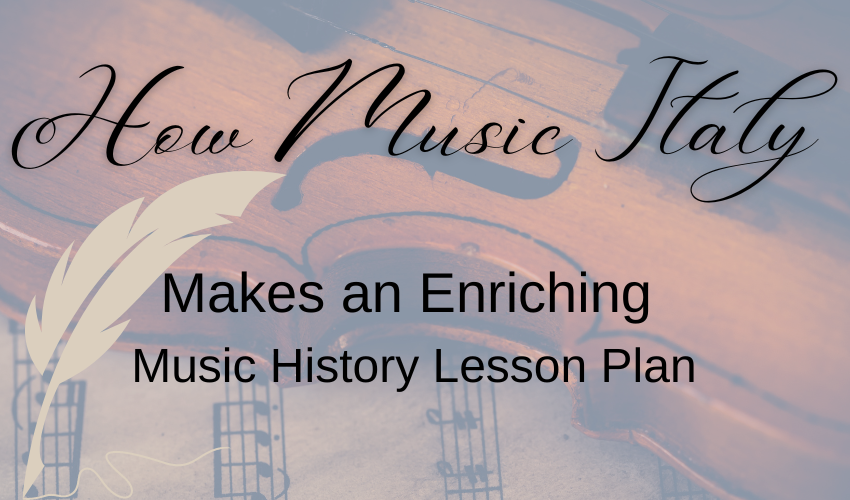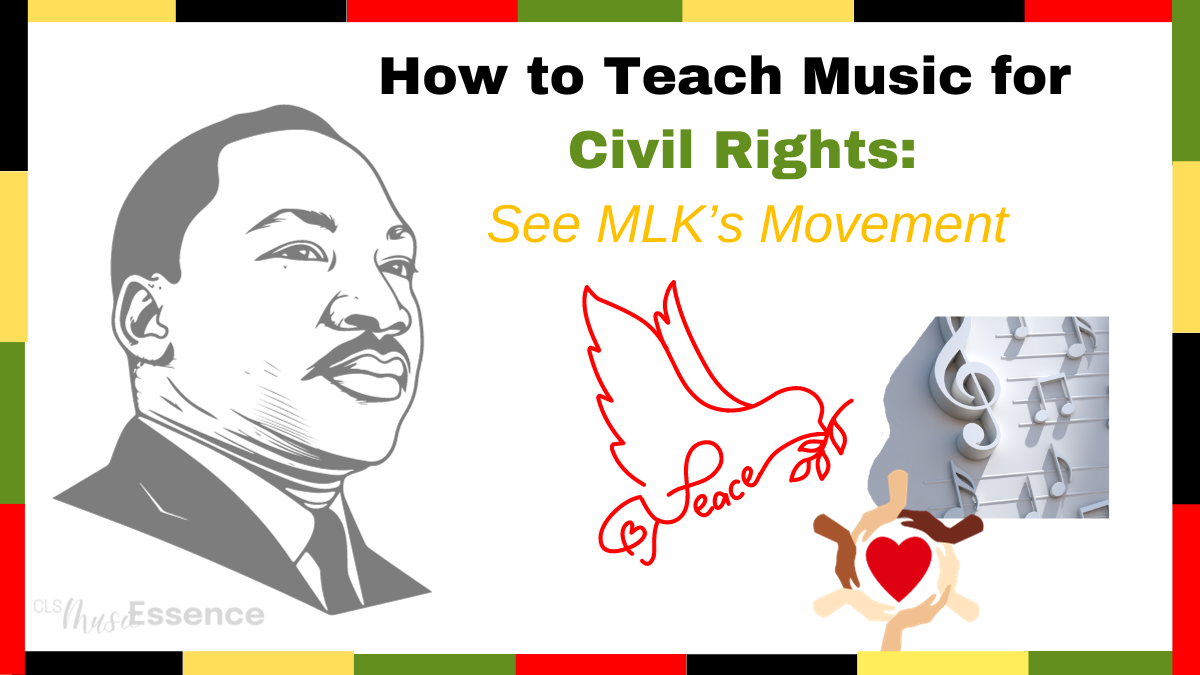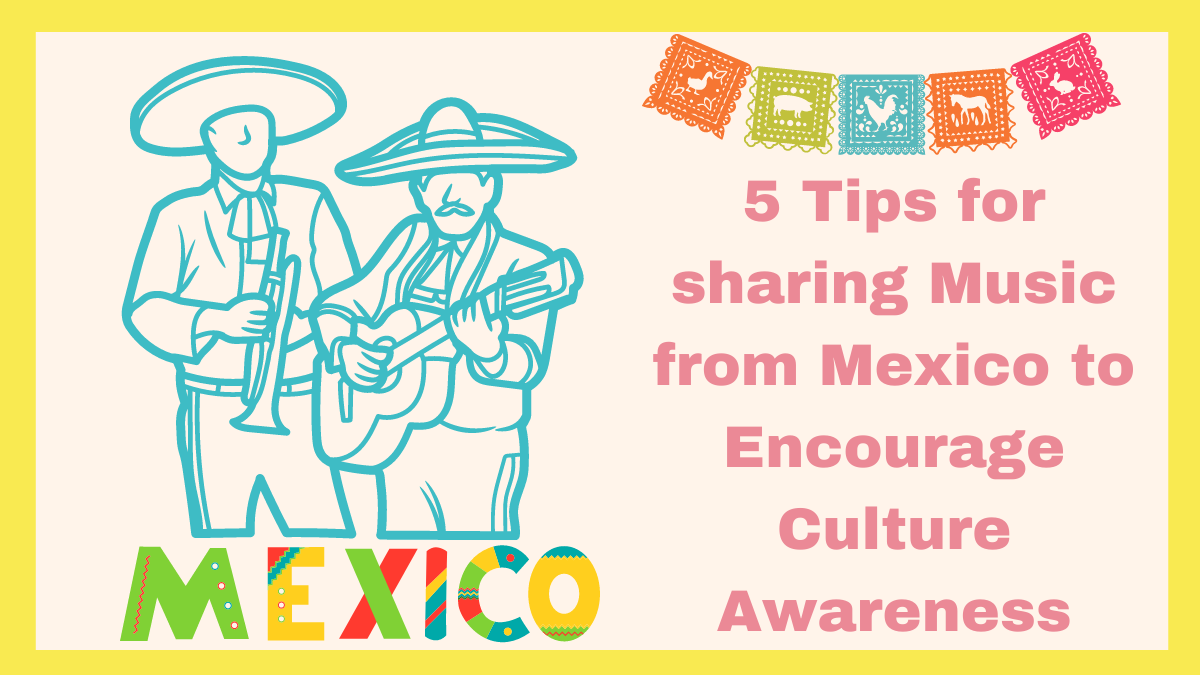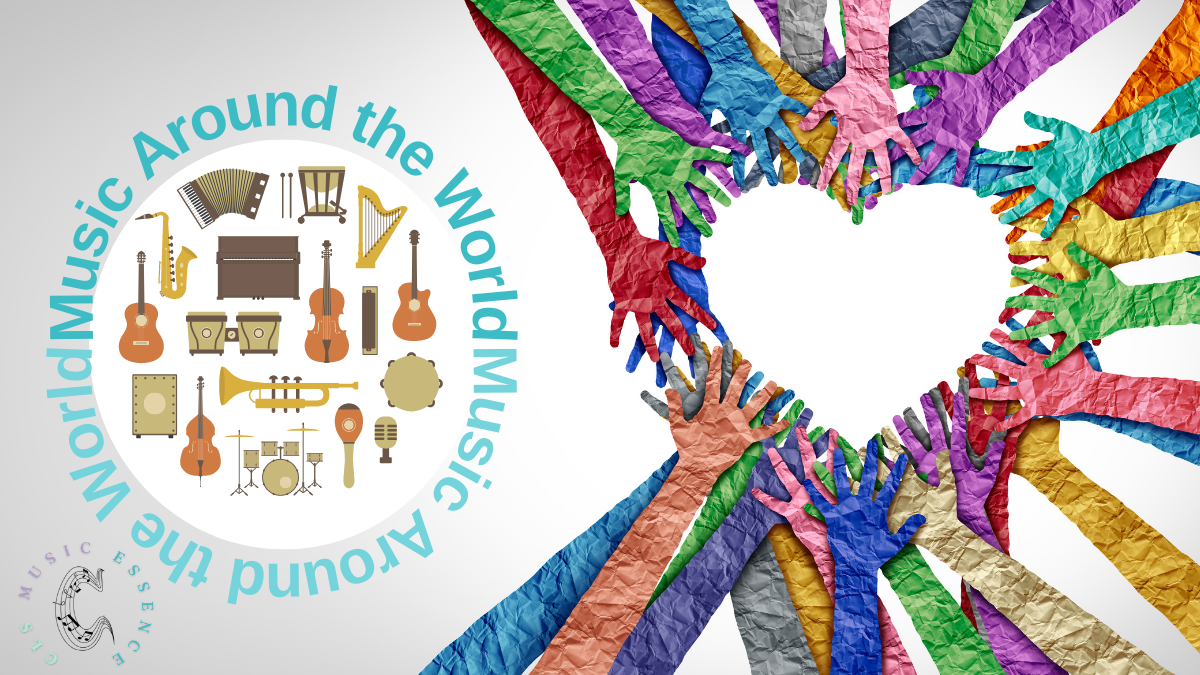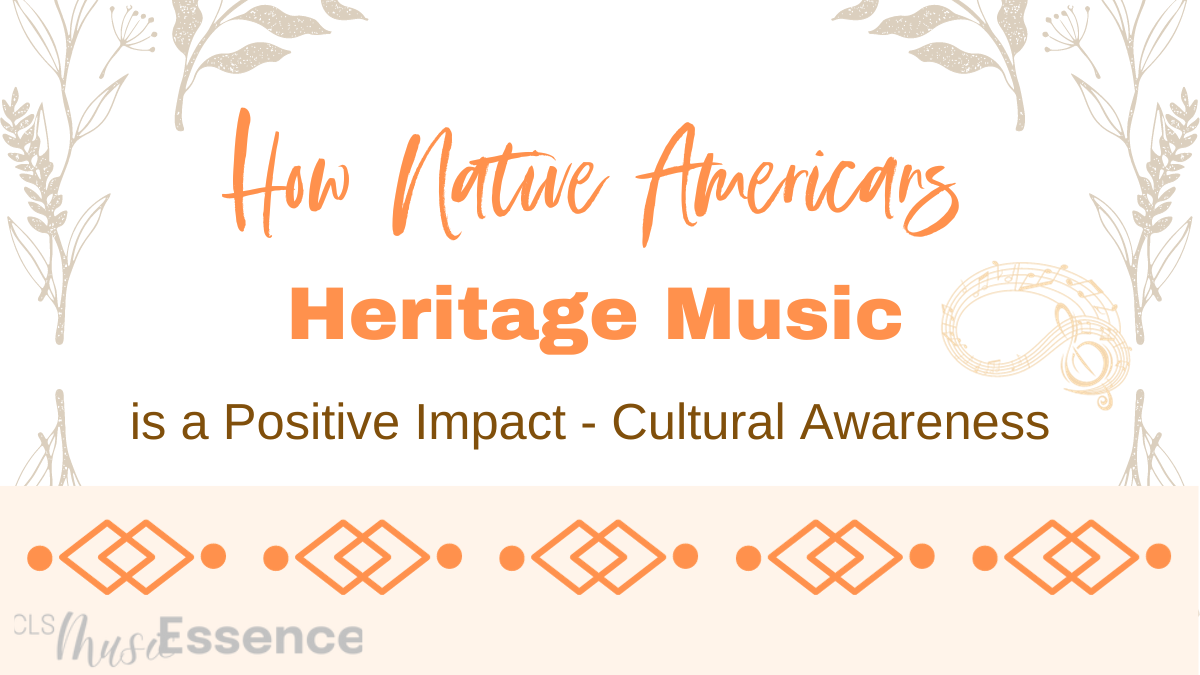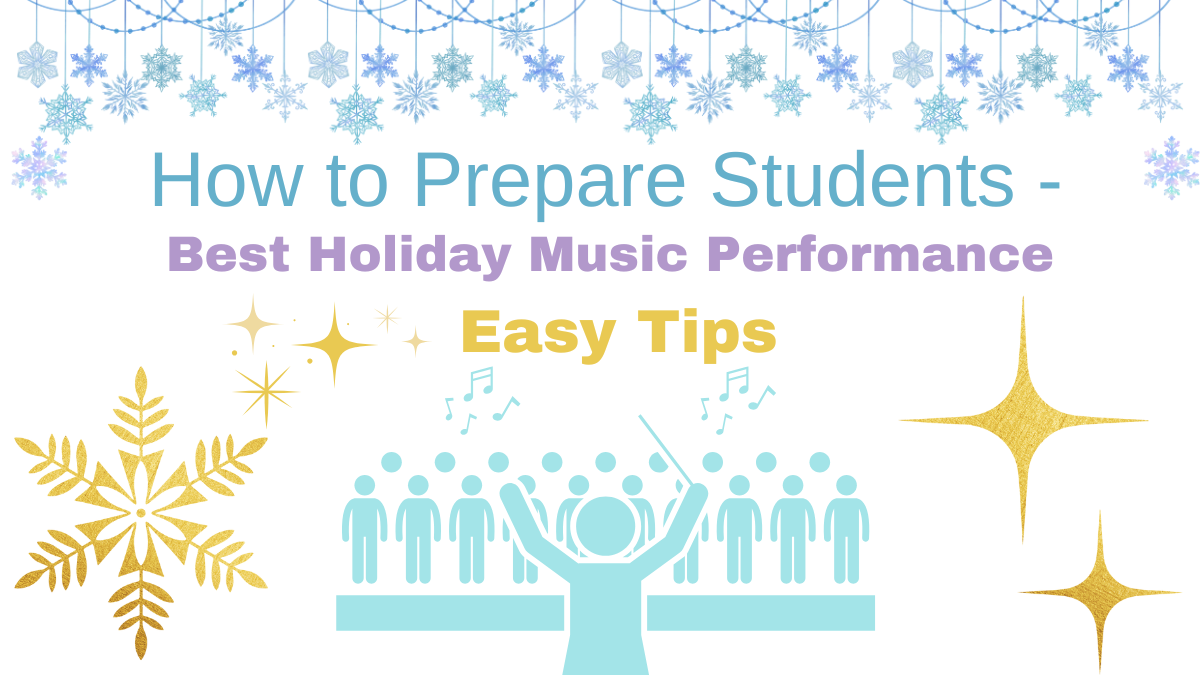How Music Italy Makes an Enriching Music History Lesson Plan
Music Italy created is embedded in today’s music through notation, terminology, and form. Your students will enjoy music around the world with Italy’s rich and vast music history that spans from the Medieval Music Era forward. Of all the places to be during the Renaissance Era Italy was a cultural hot spot. If you are teaching different cultures of music, Italy is one to highlight.
Italy Contributions to Music Education
Bring students back to the medieval music period to discover an Italian Benedictine monk named Guido d’Arezzo. Guido advanced music theory, notation, and education. I love finding a good book to go with learning. Early elementary students love being read to. Reading is a great way to reinforce your learning goal and the purpose of your music lesson plan.
A wonderfully illustrated book tells the story of Guido of Arezzo who advanced both syllables and visual ways to learn and remember music. The book is Do Re Mi: If You Can Read Music, Thank Guido D’Arezzo. Guido embraced the use of lines and neumes to represent pitches.
Guido added color and clef signs to the music staff. A yellow line shows the note C and a red line for the note F. This way students could easily see the half step from B-C and E-F in a scale. What a great idea! How many students could benefit from a colored staff?
Guido also came up with the idea of using symbols to represent pitches. He took the first syllable of each line of text from a sacred hymn.
“Ut-re-mi-fa-sol-la”
Each phrase of the hymn began one note higher. Guido’s system was altered slightly to what we now call solfege.
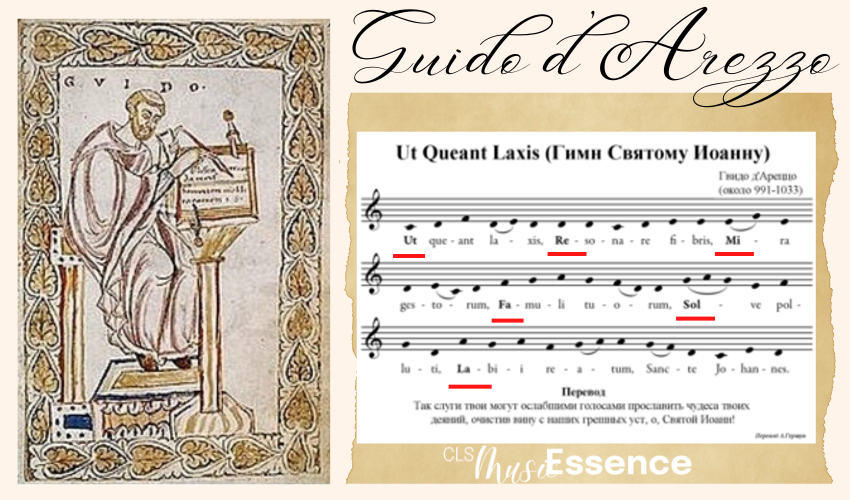
The Renaissance Music 14th-16th Centuries
The Italian Renaissance 14th – 16th centuries was a time of great cultural achievements in literature, artwork, architecture, and music. When studying music around the world during the Renaissance Italy was the place to be. Students would love meeting the real Leonardo, Donatello, Michelangelo, and Raphael. Before they were turtles, these 4 were Italian Renaissance artist and masters of their craft.
Italian artists flocked to Italy during the Renaissance music era. Speaking Italian became fashionable. Publishing, printing, and distributing sheet music was a skill of Italians. Italian terms became the popular choice to convey how music should sound, and many music Italian terms are still standard today.

Frottola and madrigal are two types of songs that were popular during the Renaissance music era. Frottola’s were sung in the royal courts. If you have ever been to a Renaissance Fair you most likely heard a madrigal. A madrigal was popular in the 1400s and could be quite complex when sung with 2 to 8 different parts.
Traditional Music from Italy
The traditional music from Italy has a proud music history when looking at music around the world. Gregorian chant was an early sacred song form from the Medieville Era with one melodic unaccompanied line of singing.
Students will love the history of a traditional song and folk dance from Italy called the Tarantella. Folklore stated that the tarantella dance could cure a tarantula bite. If a person got bit by the spider, they would go into a dance frenzy. The dance would get rid of the poisonous venom.
O ‘Sole Mio composed in 1898 is about a sunny day in Naples Italy. The song was performed and recorded all around the world. Elvis Presley used the tune and changed the words to record It’s Now or Never which became his biggest-selling international song.
Cultures in Music Italy Narrated Slides
If you need a quick lesson already put together for you, check one out here.
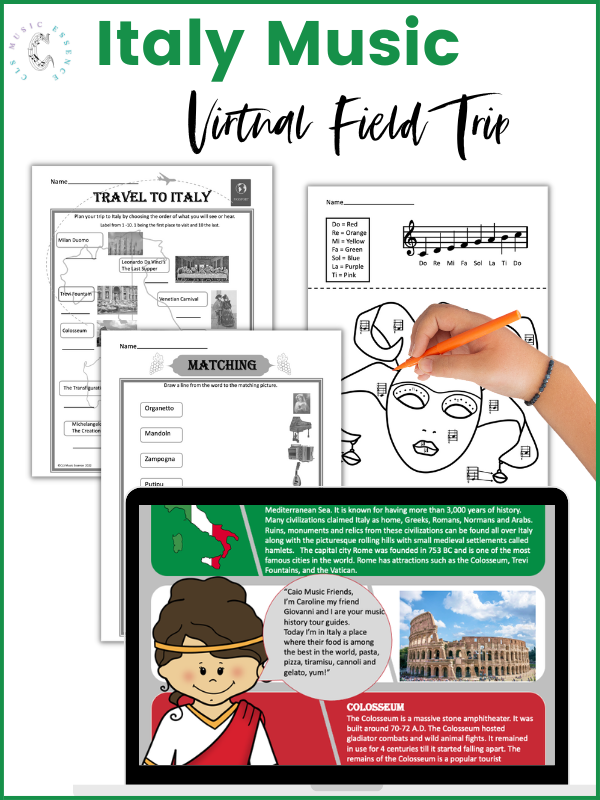
Music Instrumental Forms
Two popular Italy music instrument forms, Symphony and Concerto, are traced to Italian music. Symphony is a lengthy music form for an orchestra. The symphonic form is great for a tempo music lesson plan. Earlier symphony form had 3 movements often fast-slow-fast.
The concerto is a combination of using a solo instrument with an orchestra.
Italian music composer Vivaldi wrote over 500 concertos. Vivaldi’s most well know concerto to date is his “Spring Concerto” from The Four Seasons. This is one of my favorite Baroque music lesson plans. To see how you can create a music escape room using this concerto and Vivaldi’s music career read more here.
Opera
Opera started in Italy during the 1600s. Rossini, Bellini, Donizetti, Verdi, and Puccini composed some of the most famous operas ever written and performed. The William Tell Overture, Rossini’s most memorable opera, captivated audiences since it was written. To introduce this opera to students, there are many fun activities such as body percussion or rhythm stick play along to introduce this opera to students.
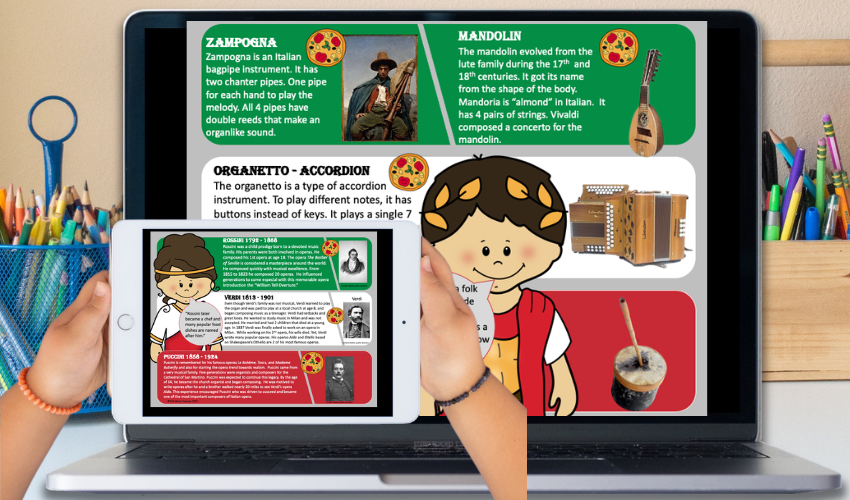
Italy Music Instruments
Italy get the credit for creating the string family violin, viola, cello, and contrabass. The violin first appeared in Northern Italy in the early 16th century. The word violin is found in documents from 1530. Although no instruments survived from that century there are several paintings from then showing the violin.
Another common Italy music instrument is the piano. Prior to the piano, the harpsichord was first mentioned in 1397. The piano was designed in Italy in the early 1700s. The main difference between earlier models is the piano can play different dynamic levels of loud and soft.
Some unusual Italy music instruments are the zampogna an Italian bagpipe with 4 double reed pipes. Also, the organetto is a type of accordion that uses buttons instead of keys. The putipu is a percussion instrument. It is a type of friction drum that has a bamboo cane inserted into the middle of a drum membrane.
Cultures of the World Lesson Plans
I create music history lesson plans to save my voice. I recorded it once and put it into a narrated google slide presentation to have for years to come. Add worksheets so students can interact with the information they are learning. Plus you can extend the lesson through the month by adding a folk song to learn.
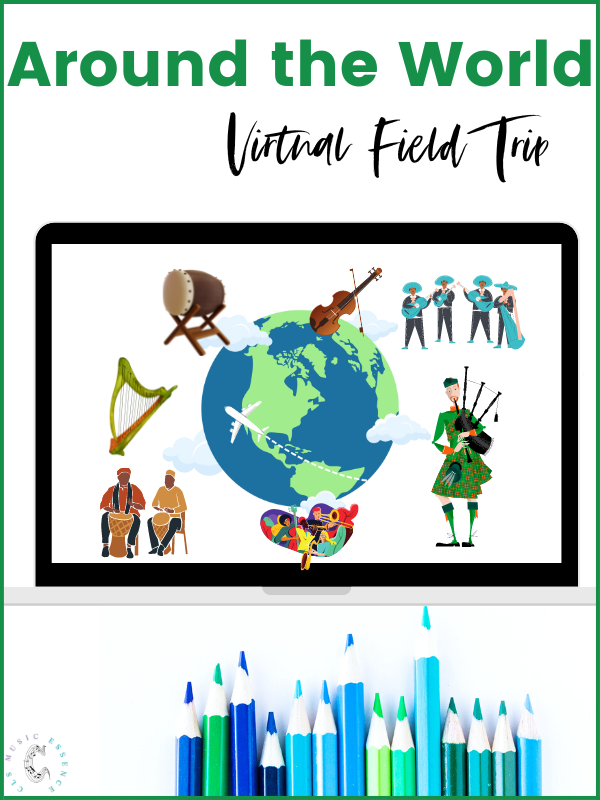
Include in a Music Lesson Plan
- Guido d’Arezzo – solfege, music staff
- Renaissance – Frotolla, madrigal songs, Italian music terms
- Traditional Music Italy – Gregorian Chant, Tarantella, O ‘Sole Mio
- Music Forms – Symphony, Concerto, Opera
- Italian Composers – Rossini, Bellini, Donizetti, Verdi, and Puccini
- Italy Music Instruments – String family, piano, zampogna, putipu

